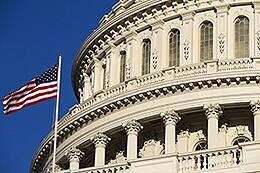 I don’t normally write about politics. Although it’s an essential part of market and economic analysis, the connections are indirect and take time to show up, making daily or even monthly commentary not very relevant.
I don’t normally write about politics. Although it’s an essential part of market and economic analysis, the connections are indirect and take time to show up, making daily or even monthly commentary not very relevant.
Politics is also fairly loose, in that what politicians say has little relation to what they actually intend to do, and what they intend to do has little relation to what actually gets done.
With that in mind, it rarely makes sense to spend too much time on day-to-day political happenings. A good example was several months ago, when I was asked to weigh in on a rumor that Hillary Clinton planned to raise taxes. Given that this was a rumored proposal by a potential (at that time) presidential candidate who would first have to get the nomination, then win the election, then actually get Congress to pass a bill, I responded that worry was probably premature.
New uncertainties (and risks) emerge
I still believe that, from a policy perspective, we shouldn’t be overly concerned about specific proposals. At this point, the candidates’ policy proposals are just wish lists, not firm intentions. But for the first time in a very long time, the political process itself has become a source of uncertainty—and risk.
Widening range of outcomes. One thing that stands out is the unprecedentedly wide range of potential outcomes. Time was, we had a slightly right-of-center candidate and a slightly left-of-center candidate, and the policies on offer ranged from A to B. Now we have Bernie Sanders to the left, Ted Cruz to the right, and Clinton and Donald Trump somewhere in the undefined middle.
There’s a real chance that this election will bring outcomes well outside the norm, policy-wise. This alone is enough to rattle markets.
Surge in populist sentiment. The other significant change has been the rise of populism. In both parties, sacred policy cows are being sacrificed to a sense that old answers don’t work. Populists are typically against vested interests, including financial ones, and the prospect of a more difficult environment for business could well depress profitability and stock prices, even if a Republican (i.e., Trump) were elected.
Expect a more volatile climate
Neither of these factors is dependent on the current candidate lineup. With Sanders pulling Clinton to the left and Cruz pulling the Republicans to the right, the expanded policy range will survive the individual candidates, as will the populist discontent.
Many expect the markets to calm down as the election progresses, but from where I sit, these trends look poised to continue. They may even become more pronounced. If either side is forced to commit to ideas that are perceived as damaging to business, the election will become even more central to market performance.
In short, things seem unlikely to calm down. Expect volatility to continue through the election—and probably well beyond.


 Print
Print


